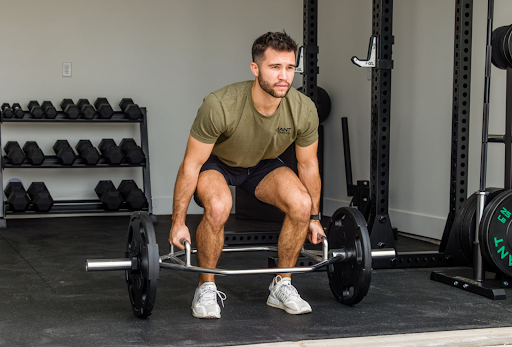LIFESTYLE
Understanding the Different Types of Barbells

The barbell is an iconic symbol of strength and a staple in most weight training routines. But the world of barbells extends beyond the standard straight bar you might have in mind. Understanding the different types of barbells and their functionalities will elevate your workouts and help you target specific muscle groups more effectively. This guide explores the most common barbells and specialty bars, helping you choose the right tool for your lifting goals.
Standard Barbells
The standard barbell, typically 7 feet long and weighing around 45 pounds, is the most common type in gyms and home setups. It’s a versatile tool used for various exercises, including squats, deadlifts, bench presses, rows, and overhead presses. Standard barbells are compatible with standard weight plates, allowing you to progressively overload your workouts by adding more weight.
Olympic Barbell
Olympic barbells are specifically designed for Olympic weightlifting exercises, such as snatching, cleaning, and jerking. They differ from standard barbells in a few key ways:
- Length: Olympic barbells are slightly longer, typically measuring 8.6 feet.
- Weight: Olympic barbells weigh 45 pounds (20 kg) compared to the standard barbell’s 45 pounds (typically in lbs).
- Knurling: The knurling (raised grip pattern) on an Olympic barbell is typically more aggressive to provide a better grip for fast and powerful lifts.
- Sleeve Compatibility: Olympic barbells are designed for use with bumper plates, which have a larger diameter (450mm) to accommodate the faster, more dynamic movements of Olympic weightlifting.
Bumper plates are crucial for Olympic weightlifting due to their ability to absorb impact when dropped from overhead positions. Standard weight plates are not recommended for Olympic lifts due to the risk of damage when dropped.
Specialty Bars
While standard and Olympic barbells offer great versatility, specialty bars are designed to target specific muscle groups or provide variations on traditional exercises. Here are some popular specialty bars for gym:
- Curl Barbell: This bar features a curved design that allows for a more natural grip during bicep curls, reducing strain on your wrists.
- Tricep Barbell: This EZ bar features a zig-zag design that allows for a closer grip during tricep extensions, isolating the tricep muscles more effectively.
- Safety Squat Bar: This bar has a cambered design that allows the bar to sit higher on your back compared to a standard barbell squat. This can be beneficial for lifters with limited shoulder mobility or those recovering from injuries.
- Trap Bar (Hex Bar): This hexagonal-shaped bar allows you to stand inside the frame while deadlifting. This can improve your posture and mechanics during deadlifts, making it a good option for beginners or those with lower back limitations.
- Swiss Bar: This barbell features neutral-grip handles that allow for wrist-friendly pressing exercises like chest presses or shoulder presses.
Choosing the Right Barbell
The best barbell for you depends on your fitness goals and the types of exercises you perform most frequently.
- Beginners: Start with a standard barbell. It’s versatile and allows you to master foundational exercises before exploring specialty bars.
- Powerlifters: A standard barbell or a deadlift bar (similar to a hex bar but often thicker and straighter) are ideal for powerlifting movements like squats, deadlifts, and bench presses.
- Olympic Weightlifters: Invest in an Olympic barbell and bumper plates for Olympic lifts like the snatch and clean and jerk.
- Bodybuilders and General Fitness Enthusiasts: Consider a standard barbell along with a curl bar or tricep bar for bicep and tricep isolation exercises. A safety squat bar or trap bar can also offer variations for deadlifts and squats.
Additional Considerations
- Weight Capacity: Ensure the barbell can handle the weight you intend to lift. Most standard and Olympic barbells have a high weight capacity, while some specialty bars might have lower weight limitations.
- Knurling Depth: Consider the knurling depth and how aggressive you prefer your grip to be. Standard barbells typically have a moderate knurl depth, while Olympic barbells have a more aggressive knurl.
- Budget: Specialty bars can be more expensive than standard barbells. Consider your needs and prioritize the bars that will have the most significant impact on your workouts.
The Takeaway
Understanding the different types of barbells empowers you to choose the right tool for your specific training goals. Start with a standard barbell for foundational exercises, and gradually expand your collection with specialty bars as your strength grows.

-

 BUSINESS3 months ago
BUSINESS3 months agoGrow Your Audience with USA Instagram Followers
-

 TECH3 months ago
TECH3 months agoFreedom Forever Solar Reviews Explain How Conversational Intelligence Turns Customer Interactions into Insights
-

 HEALTH3 months ago
HEALTH3 months agoExploring the Best Cannabis Product Options for Every Lifestyle
-

 BUSINESS3 months ago
BUSINESS3 months agoOn the Frontlines of Conservation: The Role of Tracker Academy Graduates in Anti-Poaching